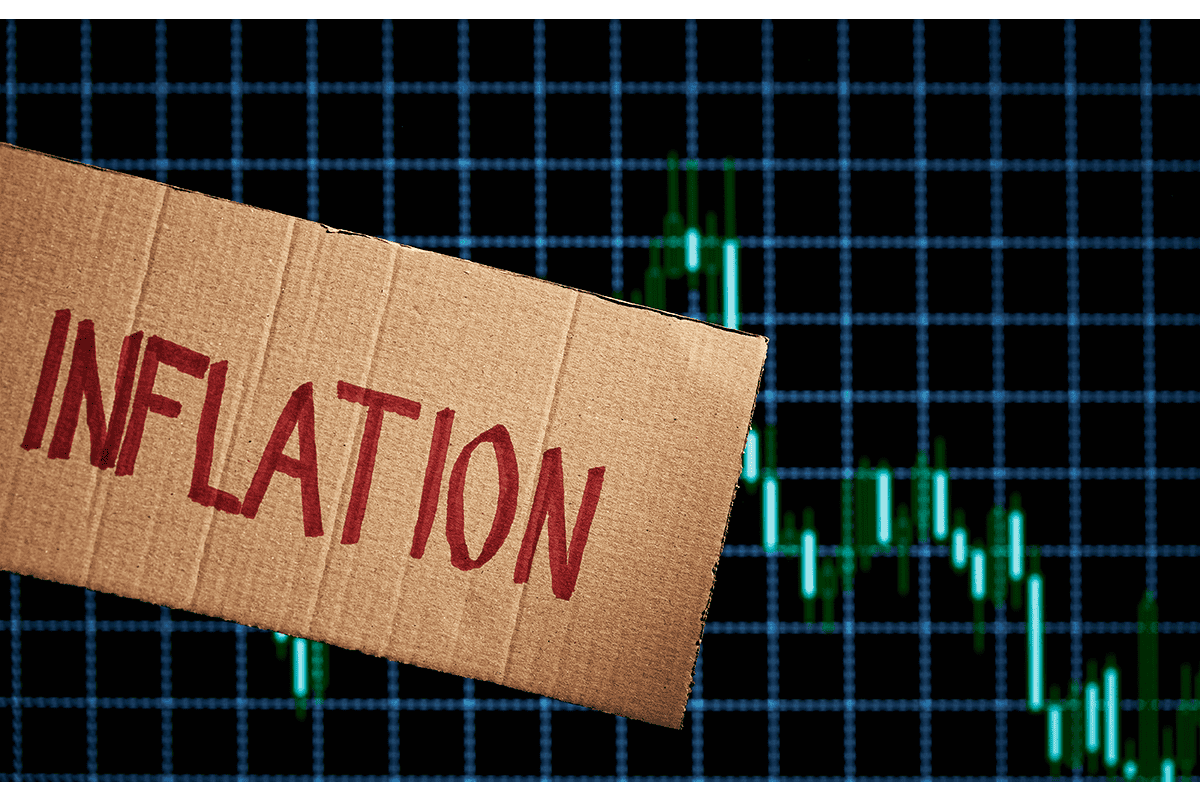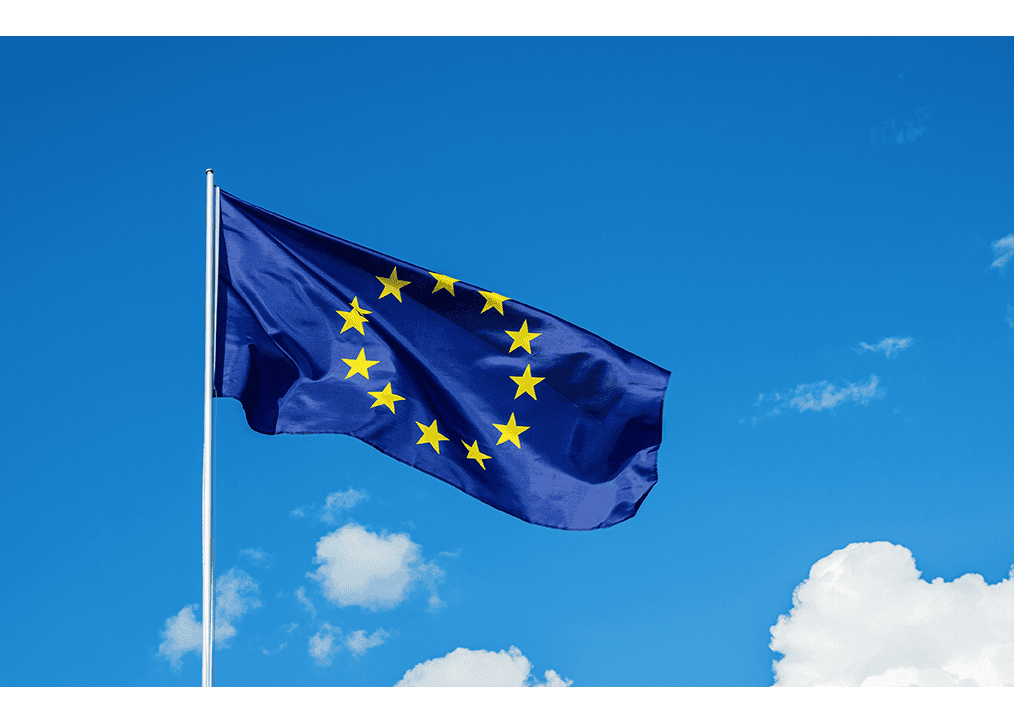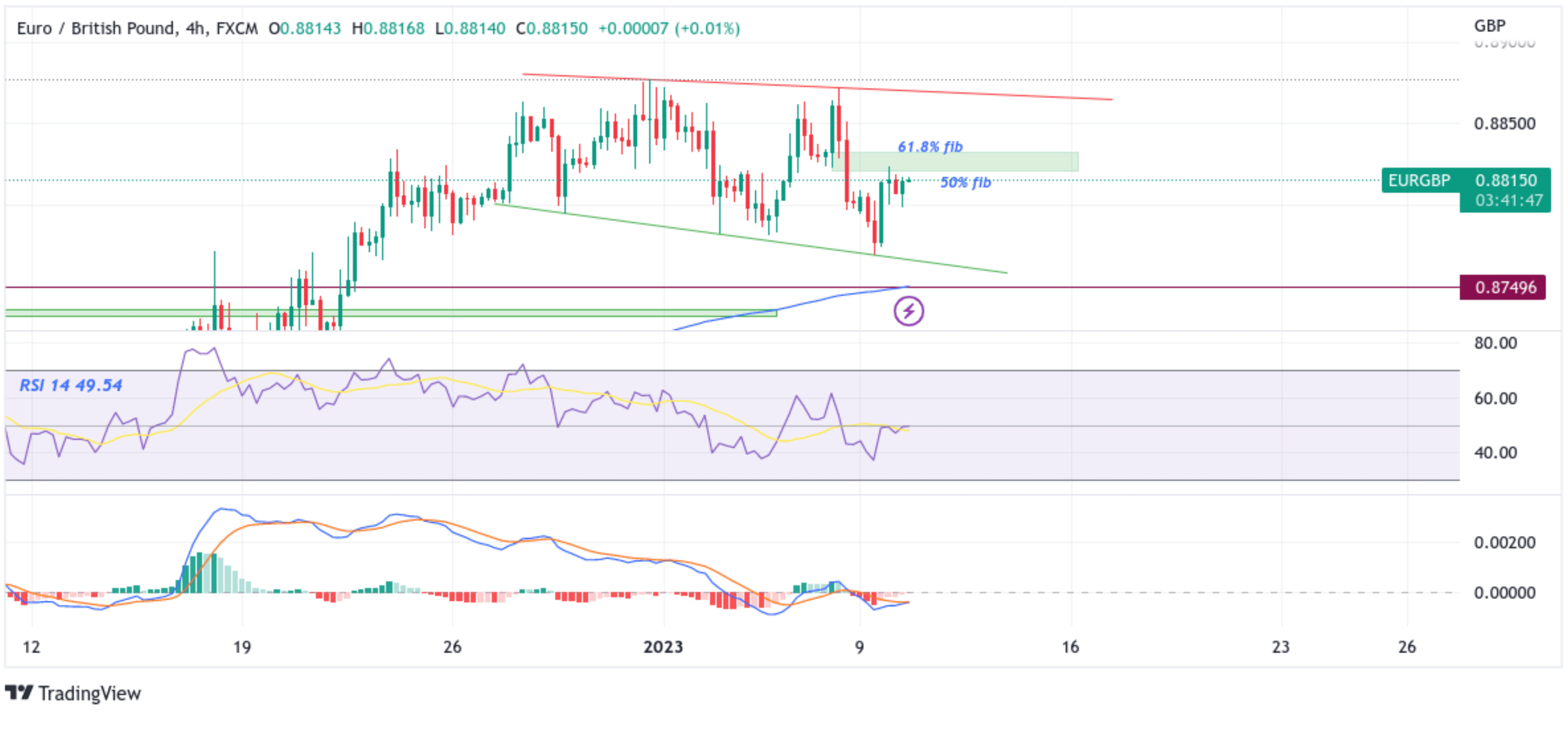EUR/GBP Soars To One-Week High Above 0.88000 Mark To Rebound From Worst Start Of The Year






- EUR/GBP attracts some buying to extend recovery above the 0.88000 mark, aims to break above key fib levels
- U.K. Retail Sales Jump in Dec, Lag Inflation
- Hull Pill confirms the BOE Committee will continue to act as necessary to ensure the inflation target is achieved on a lasting basis over the medium term
- Euro Area Inflation Rate down to 4-month low, the drop is likely to continue due to the decrease in global energy prices in early January

The EUR/GBP cross witnessed some renewed buying pressure during the early Tokyo session after initially rebounding from the vicinity of the 0.88234 level/ 50% fib level and staged some follow-through selling. The downtick, however, lacked a firm follow-through bearish conviction and ran out of steam after the pair attracted renewed buying. It was last seen trading 10 pips above the previous day's low and looked set to maintain its bid tone heading into the European session.
The shared currency's recent uptick could be attributed to the firm UK Retail sales data, which jumped in December, beating market forecasts. Retail sales in the United Kingdom increased 6.5% on a like-for-like basis in December 2022 from a year ago, accelerating from a 4.1% rise in November amid higher cost of goods and the Christmas boost. Still, according to data released Tuesday by the British Retail Consortium (BRC), the growth rate lagged behind inflation.

Additionally, Hawkish comments from BoE Chief Economist Hull Pill in a speech at the money market association of New York University (Money Marketeers) event on Tuesday was also seen as another factor that offered some support to the Cable and exerted upward pressure on the EUR/GBP pair. "Monetary Policy Committee will continue to act as necessary to ensure the inflation target is achieved on a lasting basis over the medium term, remaining alert to new economic shocks that might create further inflation disturbances. There should be no question about what the MPC seeks to achieve or whether it is prepared to take the necessary actions. As ever, we remain in the price stability business. The open question is how we will act to achieve the 2% inflation target sustainably, given the substantial challenges of the moment. That is the question on which I hope to shed some light this evening," he said.
Last week, we had updates to December UK Sevices PMI data, which showed weaker activity levels. A sharp fall in economic growth might at least partly offset any boost to equity prices from lower interest rates, although at present, markets seem hopeful that an early rate peak will raise the odds of a soft landing. This economic growth outlook is another reason for falling interest rate expectations. The Bank of England, Decision Maker Panel, showed that inflation and wage expectations are still rising, which leaves the Bank with a challenging task ahead this year.

Shifting to the European docket, Eurozone inflation fell more than expected to 9.2% in December. This drop will likely continue due to the decrease in global energy prices in early January, which will alleviate concerns about energy shortages in Europe this winter. However, the core inflation rate increased more than anticipated to a record 5.2%, up from 5% in November. It is worth noting, Central banks have stated that the decrease in energy prices and the easing of global bottlenecks will likely lead to lower inflation, but tight labor markets may keep domestic inflation pressures high. Additionally, recent purchasing managers' index (PMI) data for the Eurozone suggests that the end of 2022 may be weaker, potentially indicating that the Eurozone may have entered a recession at the end of the year. This will create a difficult challenge for the European Central Bank in 2023. While inflation was seen as a more significant risk than slowing growth in 2022, this may change in 2023. Markets anticipate further interest rate hikes this year, but at a slower pace, with a peak expected in mid-2023. It will be necessary to closely monitor data and comments from central bank officials at the beginning of this year.
As we advance, investors look forward to the European docket featuring the speech of the German Bundesbank (Buba) Vice President Buch, which will contain subtle clues on future monetary policies.

Technical Outlook: Four-Hours EUR/GBP Price Chart

From a technical perspective, the price is looking to challenge again the strong barrier plotted by 61.8% and 50% Fibonacci retracement levels at 0.88206 - 0.88325 levels after a failed first attempt. If the price pierces this barrier, bullish momentum could accelerate toward retesting the key resistance level plotted by a horizontal trendline extending from the late December 2022 swing high. A convincing break above the aforementioned resistance level (bullish price breakout) would negate any near-term bearish outlook and pave the way for additional gains around the EUR/GBP pair.
All the technical oscillators are in negative territory, with the RSI (14) at 49.54, slightly below the signal line and portraying a bullish filter. However, if the price manages to pierce above the 61.8% and 50% fib levels, followed by a move in the signal line (50), it would trigger bulls to place new bullish bets. The Moving average convergence divergence (MACD) crossover is also below the signal line (it is prudent to wait first for a move above the signal line before positioning for any further upward movement).
On the flip side, if dip-buyers and technical traders jump in and spark a bullish turnaround, initial resistance appears at the 0.87837 support level en route to the key support level plotted by a downward-sloping trendline extending from late December 2022 swing low. A convincing break below the aforementioned support levels (including a bearish price breakout) would negate the positive outlook and prompt aggressive technical selling around the shared currency. The downward trajectory could then accelerate toward the next relevant support (demand zone), ranging from 0.62969 - 0.63047 levels. Sustained weakness below these levels would pave the way for more losses around the EUR/GBP pair.

